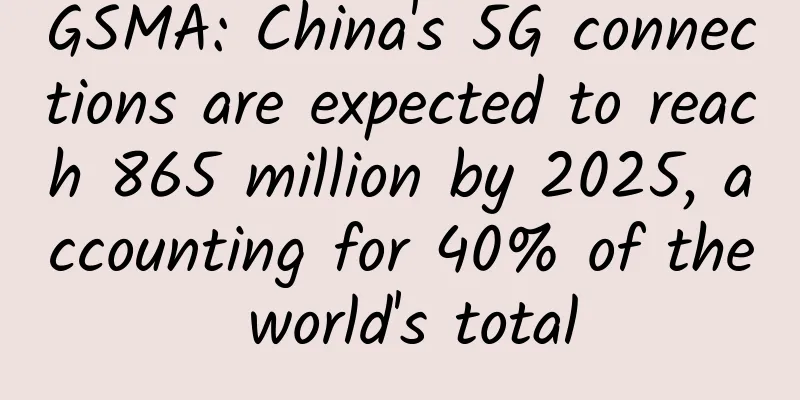China Economic and Social Service: Analysis of the Global Internet of Vehicles Market in 2015-2016

|
1. Market size analysis The Internet of Vehicles uses wireless communication, visual recognition, radar and other technologies to collect information about vehicles, roads, environment, etc., and through vehicle-to-vehicle and vehicle-to-road information interaction and sharing, it enables intelligent collaboration and cooperation between vehicles and infrastructure, thereby realizing intelligent traffic management control, intelligent vehicle control and intelligent dynamic information services. A study by Accenture shows that when people consider buying a car, they are beginning to pay more attention to in-vehicle technology than the performance of the whole vehicle, and the latter has gradually become a key factor affecting their decision-making. With the continuous optimization of mobile network speed, quality, and tariff services, the Internet of Vehicles services based on mobile networks will continue to be enriched. In the future, Internet of Vehicles will become a standard or value-added feature of cars, and cars will become another Internet portal after mobile phones. Gartner predicts that by 2020, 20% of vehicles worldwide will have some form of wireless network connection, and the number of cloud-connected cars using this service will exceed 250 million. According to Machina Research, the total number of connections in the cloud-connected car market will grow at a compound annual growth rate of 31%, and is expected to reach 693 million in 2020. A report jointly released by GSMA and SBD predicts that the global Internet of Vehicles market will grow at an average annual compound growth rate of 25%, and is expected to reach 39 billion euros in 2018. IHS predicts that global sales of driverless cars will reach 230,000 in 2025 and 11.8 million in 2035, by which time the number of driverless cars in use will reach 54 million. Among them, the market share in China will reach 24%, the North American market will reach 29%, and Western Europe will reach 20%. In the past decade, my country's automobile industry has developed rapidly, with production and sales leading the world for many consecutive years. "Made in China 2025" released in 2015 proposed: to deeply integrate the new generation of information and communication technology with the manufacturing industry, the Ministry of Industry and Information Technology will strive to promote the research of key technologies for China's intelligent connected vehicles and realize the transformation and upgrading of the automobile industry. At present, the research on the "Technical Roadmap for the Development of Intelligent Connected Vehicles" in China has been basically completed, and relevant standards and plans are also being formulated. The huge market potential capacity and development opportunities attract relevant upstream and downstream enterprises in the industrial chain to actively participate. According to statistics, the market size of China's Internet of Vehicles reached 155 billion yuan in 2015, with a year-on-year growth rate of 40.9%, and the penetration rate of Internet of Vehicles reached 10% (see Figure 4-19 and Figure 4-20); by 2020, 90% of cars will have Internet access, the number of car-to-network users will exceed 40 million, the penetration rate will exceed 20%, and the market size will exceed 400 billion yuan; by 2025, every new car will be connected to the Internet in multiple ways, achieving full coverage of the Internet of Vehicles. Figure 4-19: China's Internet of Vehicles Market Size and Forecast, 2012-2017 Source: China Economic and Social Service Database Figure 4-20: Changes in penetration rate of China's Internet of Vehicles from 2012 to 2015 Source: China Economic and Social Service Database In the industry, cross-border cooperation between traditional automobile manufacturers and Internet companies to develop Internet of Vehicles and related products has become a hot topic. Alibaba reached a cooperation agreement with SAIC in March 2015, established an automobile business unit in April 2015, and launched the YunOS car system. Now it has launched an Internet car jointly developed with SAIC. Baidu has reached strategic cooperation with major automobile manufacturers such as Audi China, GM, FAW-Volkswagen, Mercedes-Benz, and BMW, and domestic mainstream car manufacturers such as Luchang Technology, Philco, and Excelle Electronics. Its driverless cars have been put on the road for testing at the end of 2015. Tencent launched the "Tencent Auto Link Open Platform" in 2015, and released the "Auto Link ROM", "Auto Link APP" and the "MyCar" service that connects cars through WeChat and QQ. It has now reached cooperation with automobile manufacturers such as Bosch, Neusoft, and Ford. LeTV announced its Internet of Vehicles plan in March 2016, and has now signed cooperation agreements with BAIC New Energy, BYD and Dongfeng Fengshen. The three automakers will equip some of their models with LeTV's Internet of Vehicles system ecolink. Hangsheng Electronics, Huayang Electronics and Desay SV, three automotive equipment manufacturers, have also signed cooperation agreements with LeTV AutoLink. 2. Market Trend Judgment Driven by the upgrading of technologies such as mobile Internet, wireless networks and artificial intelligence, the intelligentization of automobiles is entering a new stage of development. Governments and technology giants around the world are stepping up their research on intelligent driving technology to seize new markets and technological commanding heights. The number of connected cars in the world will reach 37.06 million in 2016 and 160 million by 2020. It is estimated that by 2022, the Internet of Vehicles will cover 90% of passenger cars. The sales of in-car entertainment content will increase from US$1.396 billion in 2016 to US$6.539 billion in 2020, and the expenditure on real-time navigation will increase from US$2.468 billion in 2016 to US$7.155 billion in 2020. Judging from the plans announced by major automakers and Internet giants, 2020 will be the first year for the commercialization of driverless vehicles, and will enter a period of explosive growth from then on. Among Internet companies, Apple's Titan Project is expected to achieve mass production in 2019-2020, Google plans to mass produce driverless cars in 2020, and Baidu plans to commercialize self-driving cars in 2018 and achieve mass production in 2020. Overall, the next 3-5 years will be an important period for a large number of Internet companies and vehicle manufacturers to deploy key technologies, road tests, and smart car concept cars. According to Accenture, my country's Internet of Vehicles market size is expected to reach US$216.2 billion in 2025, accounting for a quarter of the global market. In terms of technical standards, considering communication security and the future development of domestic enterprises, my country focuses on promoting LTE-V. To promote the development of LTE-V in China, since September 2015, the Ministry of Industry and Information Technology has signed cooperation agreements with the Zhejiang Provincial Government, the Beijing-Tianjin-Hebei Government, and the Chongqing Municipal Government. Dozens of large enterprises such as Huawei, Qianfang, BAIC, and Changan have participated in promoting the application of "broadband mobile Internet technology" in the fields of smart cars and smart transportation. LTE-V will be frozen in September 2016 and is expected to be put into commercial use in 2018. From 2020 to 2025, the new V2X market will reach 200 billion yuan. The business model of Internet of Vehicles is developing in a diversified way. At present, seizing the entrance is the key to the realization of Internet of Vehicles in the future. High-precision maps and electronic license plates are important entrances. The future business model is based on LBS data realization and the expansion of automotive aftermarket services. The coordinated development of the industry chain will become an important ecosystem for the Internet of Vehicles. Automakers, communications manufacturers and Internet companies will jointly participate in research and development; hardware manufacturers, software and content providers will cooperate more, and deeper cooperation with automakers is expected in the future. Although the Internet of Vehicles is gradually becoming popular in my country, there are very few cars that are truly intelligent, there is a lack of industry standards, and information security has become a challenge facing the Internet of Vehicles. |
<<: China Economic and Social Service: 2016-2017 China Internet of Things Annual Report
>>: Deloitte Consulting: The era of automation has arrived. Where will your employees go?
Recommend
Wenchang Tower Architectural Structure
The ancients attached great importance to Wenchan...
This is the China Bridge!
When you walk on any road or railway in China The...
Momo responds to NetEase's criticism: Tang Yan will actively defend himself or face lawsuit
Tencent Technology News Momo updated its prospect...
What happens if a girl doesn’t have her period for a month?
Possible reasons why a woman has not had her peri...
How much does it cost to produce a Tangshan sports mini program? What is the price quote for making Tangshan sports mini program?
The factors affecting the quotation of Tangshan S...
About domestic programmers climbing over the firewall
[[226521]] I originally had no inclination to dis...
For WeChat, micro-business is both a treasure and a locust
Wechat merchants should be thankful that they hav...
Besides coffee, what else can drones deliver?
Recently, a piece of news has attracted attention...
Three people started a wildfire by smoking in a forest area, concealed the fire and fled the scene
December 4, 14:40 Puning City, Guangdong Province...
Lake Nyos incident: The lake did not overflow, but more than a thousand people suffocated to death
In the summer of 1986, a villager near Lake Nyos ...
Are you prone to allergies in spring? Preventing eczema is the key
As the temperature gradually rises Many friends c...
How to create a hit marketing plan?
In 2019, we saw all kinds of people spreading kno...
WeChat lifts 5,000 friends limit, but users can no longer view Moments
Since WeChat became a work app, the number of fri...
How to plan a successful event promotion?
Event operation , planning different marketing ac...
12 Tips Every Beginner Android Developer Should Know
[[207924]] Learn Android better one skill at a ti...









